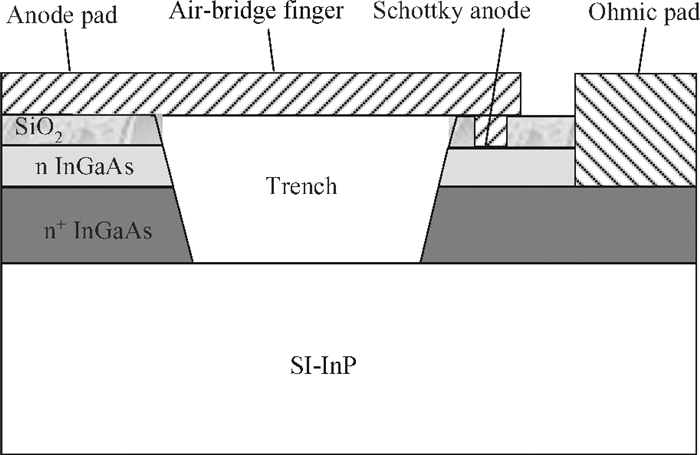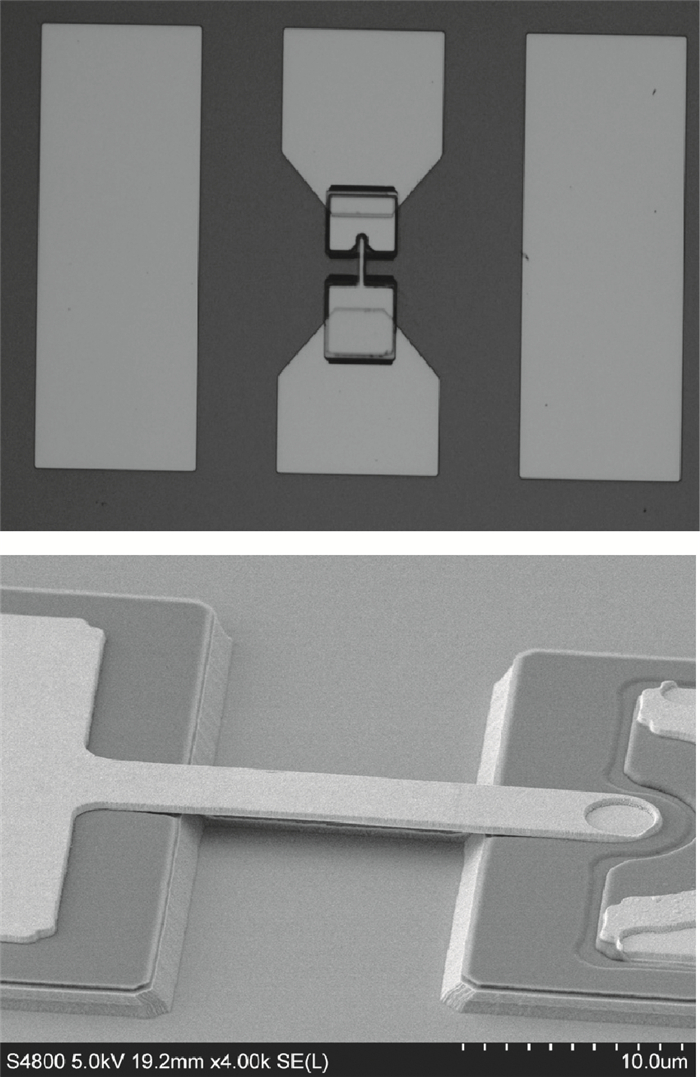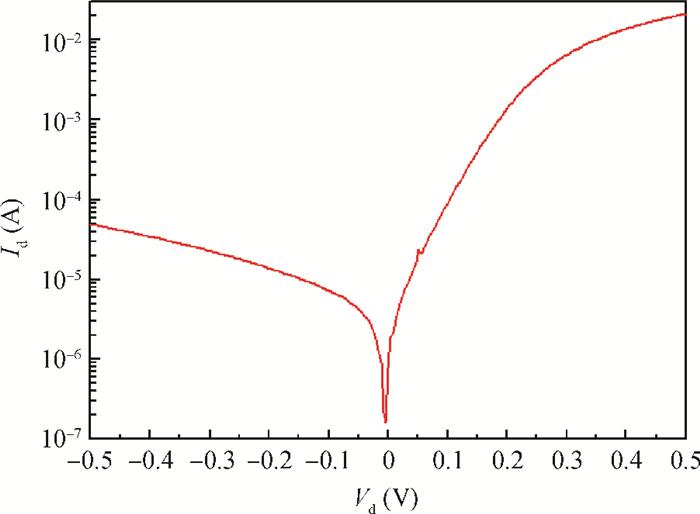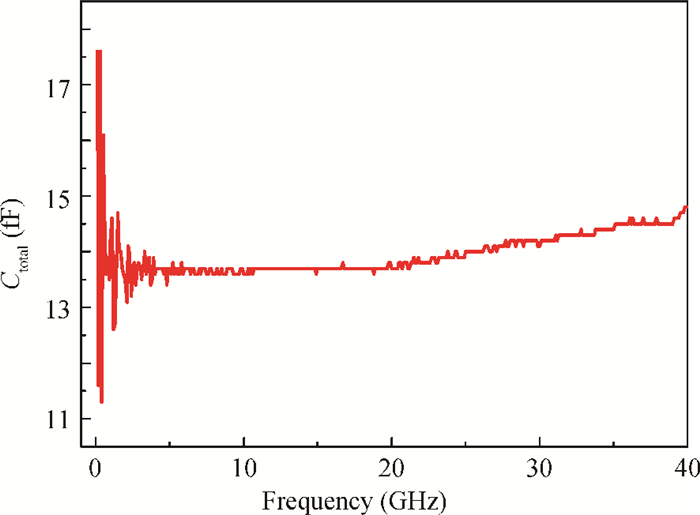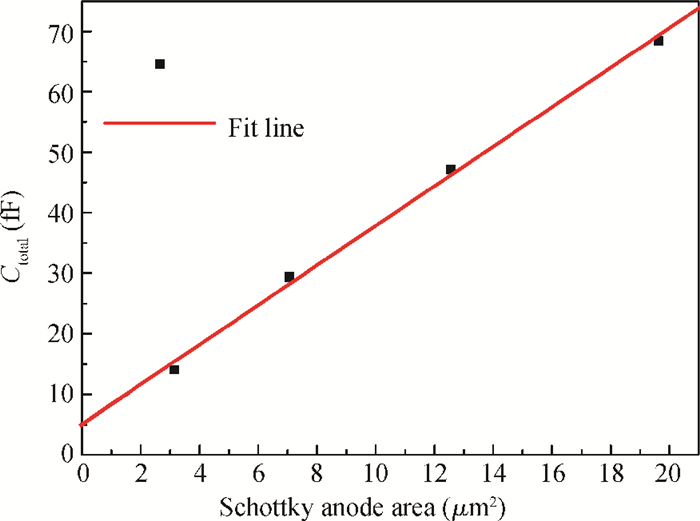| Citation: |
Jingtao Zhou, Chengyue Yang, Ji Ge, Zhi Jin. Planar InP-based Schottky barrier diodes for terahertz applications[J]. Journal of Semiconductors, 2013, 34(6): 064003. doi: 10.1088/1674-4926/34/6/064003
****
J T Zhou, C Y Yang, J Ge, Z Jin. Planar InP-based Schottky barrier diodes for terahertz applications[J]. J. Semicond., 2013, 34(6): 064003. doi: 10.1088/1674-4926/34/6/064003.
|
Planar InP-based Schottky barrier diodes for terahertz applications
DOI: 10.1088/1674-4926/34/6/064003
More Information
-
Abstract
Based on characteristics such as low barrier and high electron mobility of lattice matched In0.53Ga0.47 As layer, InP-based Schottky barrier diodes (SBDs) exhibit the superiorities in achieving a lower turn-on voltage and series resistance in comparison with GaAs ones. Planar InP-based SBDs have been developed in this paper. Measurements show that a low forward turn-on voltage of less than 0.2 V and a cutoff frequency of up to 3.4 THz have been achieved. The key factors of the diode such as series resistance and the zero-biased junction capacitance are measured to be 3.32 Ω and 9.1 fF, respectively. They are highly consistent with the calculated values. The performances of the InP-based SBDs in this work, such as low noise and low loss, are promising for applications in the terahertz mixer, multiplier and detector circuits.-
Keywords:
- Schottky barrier diodes,
- terahertz,
- cuttoff frequency
-
References
[1] Liu L, Hesler J L, Xu H Y, et al. A broadband quasi-optical terahertz detector utilizing a zero bias Schottky diode. IEEE Microw Wireless Compon Lett, 2010, 20(9):504 doi: 10.1109/LMWC.2010.2055553[2] Semenov A, Cojocari O, Hübers H, et al. Application of zero-bias quasi-optical Schottky-diode detectors for monitoring short-pulse and weak terahertz radiation. IEEE Electron Device Lett, 2010, 31(7):674 doi: 10.1109/LED.2010.2048192[3] Siles J V, Grajal J, Carlo A D. Design of submillimeter Schottky mixers under flat-band conditions using an improved drift-diffusion model. IEEE Microw Wireless Compon Lett, 2009, 19(3):167 doi: 10.1109/LMWC.2009.2013741[4] Thomas B, Maestrini A, Gill J, et al. A broadband 835-900-GHz fundamental balanced mixer based on monolithic GaAs membrane Schottky diodes. IEEE Trans Microw Theory Tech, 2010, 58(7):1917 doi: 10.1109/TMTT.2010.2050181[5] Chattopadhyay G. Technology capabilities and performance of low power teraherz sources. IEEE Trans Terahertz Sci Technol, 2010, 1(1):33 http://ieeexplore.ieee.org/document/6005327/[6] Lee C, Ward J, Lin R, et al. A wafer-level diamond bonding process to improve power handling capability of submillimeter-wave Schottky diode frequency multiplies. Proceedings of IEEE MTT-S Digest, Boston, MA, USA, 2009:957 http://ieeexplore.ieee.org/document/5165857/[7] Sze S M. Physics of semiconductor devices. 2nd ed. New York:John-Wiley & Sons, 1981[8] Hesler J L, Crowe T W. Responsivity and noise measurements of zero-bias Schottky diode detectors. 18th Intel Symp Space Terahertz Tech, Pasadena, March 2007 http://vadiodes.com/VDI/pdf/VDI%20Detector%20Char%20ISSTT2007.pdf[9] Bahl I, Bhartia P. Microwave solid state circuit design. 2nd ed. New York:John-Wiley & Sons, 2002[10] Tang A Y. Modelling of terahertz planar Schottky diodes. PhD Dissertation, Department of Microtechnology and Nanoscience, Chalmers University of Technology, Göteborg, Sweden, 2011 http://publications.lib.chalmers.se/publication/148397[11] Nittono T, Ito H, Nakajima O. Non-alloyed ohmic contacts to n-GaAs using compositionally graded InGaAs layers. Jpn J Appl Phys, 1988, 27:1718 doi: 10.1143/JJAP.27.1718[12] Sotoodeh M, Khalid A H, Rezazadeh A A. Empirical low-field mobility model for Ⅲ-Ⅴ compounds applicable in device simulation codes. JAppl Phys, 2000, 87(6):2890 doi: 10.1063/1.372274 -
Proportional views





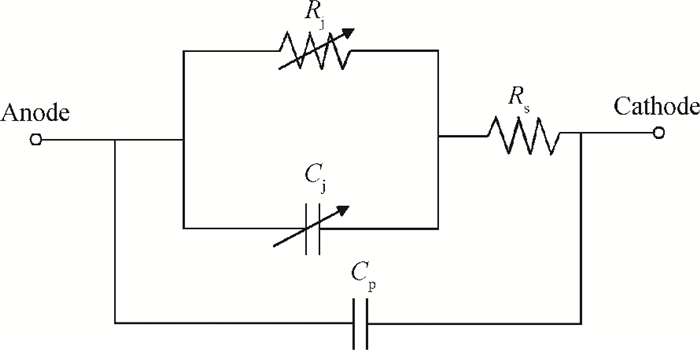
 DownLoad:
DownLoad:
